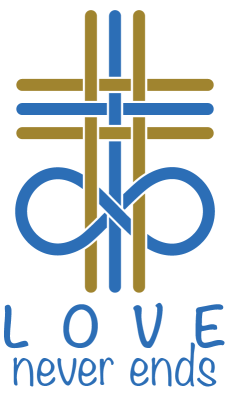| ADVENT: A MERGER OF LITURGY AND CULTURE |
| a series by Dick Fichter, parishioner |
| THE SECOND CANDLE The Bible and Advent |
| Does the Bible describe Advent? A blog post from the New International Version website entitled, “Why Do Christians Observe Advent?” stated, “While the Bible doesn’t say anything about observing the tradition of Advent, this tradition has existed within the global Christian church for centuries. It is nearly as old as the church itself, with the earliest mentions of the tradition happening as early as 380 AD at the Council of Saragossa.” It seems no one knows exactly the Western Christian church started marking Advent. While maybe it started early church history, I believe it stayed because of its adoption of cultural traditions. Another joyful tradition adopted in Advent which was not mentioned in the previous week’s reflection is the Advent Festival of Lessons and Music. You likely hear it called Lessons & Carols. This is a service held during the Advent season in which the reading of the scriptural history of salvation from the creation to the coming of Christ is interspersed with the singing of the great music of the season, including but not limited to carols. A traditional form of service is included in the Book of Occasional Services (BOS). The most popular forms of service are those based loosely on that used on Christmas Eve at King’s College, Cambridge, an English tradition. The BOS is a book of optional services and texts prepared by the Standing Liturgical Commission in response to a directive from the General Convention of 1976 to replace The Book of Offices (third edition, 1960). The services and texts of the BOS are available for “occasional” pastoral and liturgical needs of congregations. The BOS includes special materials for the church year (such as forms for Seasonal Blessings, a Christmas Festival of Lessons and Music, and a service for All Hallows’ Eve etc.). The Preface to the BOS notes that “None of it is required, and no congregation is likely to make use of all of it.” The term carol finds its origin in the French carole, a round dance in which the singers provide their own music by singing a refrain after uniform stanzas sung by a soloist. In fact, it is believed that caroling traces back to the earliest times with respect to celebration of the winter solstice. English medieval carols are poetic works in a similar form. Carols appear in a pattern of uniform stanzas, each with a burden, or refrain. The carol, “Nova, nova” (Hymn 266 in The Hymnal 1982) is an example of this early form of an English carol. See also Hymns 109, 110, and 192 in The Hymnal 1982. Christmas carols in English first appear in a 1426 work and were probably sung by groups of ‘wassailers’, who went from house to house. The songs now known specifically as carols were originally communal songs sung during celebrations like harvest tide as well as Christmas. It was only later that carols began to be sung in church, and to be specifically associated with Christmas. I really enjoy Christmas carols and one of my favorites is, “The Twelve Days of Christmas”. But in view of the carol definition, is it proper to sing the Twelve Days of Christmas in Advent? The twelve days of Christmas is the period in Christian theology that marks the span between the birth of Christ and the coming of the Magi, the three wise men, or the three kings. It begins on December 25 (Christmas) and runs through January 6, the Feast of the Epiphany, (sometimes also called Three Kings’ Day). We celebrate Feast of the Epiphany (our namesake!) on the first Sunday after January 6, if the date does not land on a Sunday. This second Sunday of Advent we will light the second blue candle on the Advent Wreath. The traditional scripture read is from Luke’s Gospel: Luke 1:26-38 Prayer – Merciful God, who sent your messengers the prophets to preach repentance and prepare the way for our salvation: Give us grace to heed their warnings and forsake our sins, that we may greet with joy the coming of Jesus Christ our Redeemer, who lives and reigns with you and the Holy Spirit, one God, now and for ever. Amen. We are lighting our wreath with prayers from an Episcopal resource called Preparing to Become Beloved Community (https://www.episcopalchurch.org/wp-content/uploads/sites/2/2021/09/EN-Beloved_Community_Year-B.pdf). This resource also gives more information and insights about this beautiful season. Next week we will explore Advent: how it becomes part of the liturgy and becomes the beginning of a liturgical year with the lighting of the third candle which is a pink candle. |

| God Loves You. No Exceptions. Hypothermia Shelter: 12/10 – 12/17 Christmas Pageant Rehearsal: 12/10 after worship Christmas Pageant: 12/17 in worship with special fellowship Contemplative Worship with Dinner: 12/17 6pm dinner, 6:45 worship Christmas Eve Services 4pm – Youth-Focused Holy Eucharist 8:30pm – Service Prelude with Harp 9:00pm – Traditional Rite II Holy Eucharist with Candlelight & Harp |


